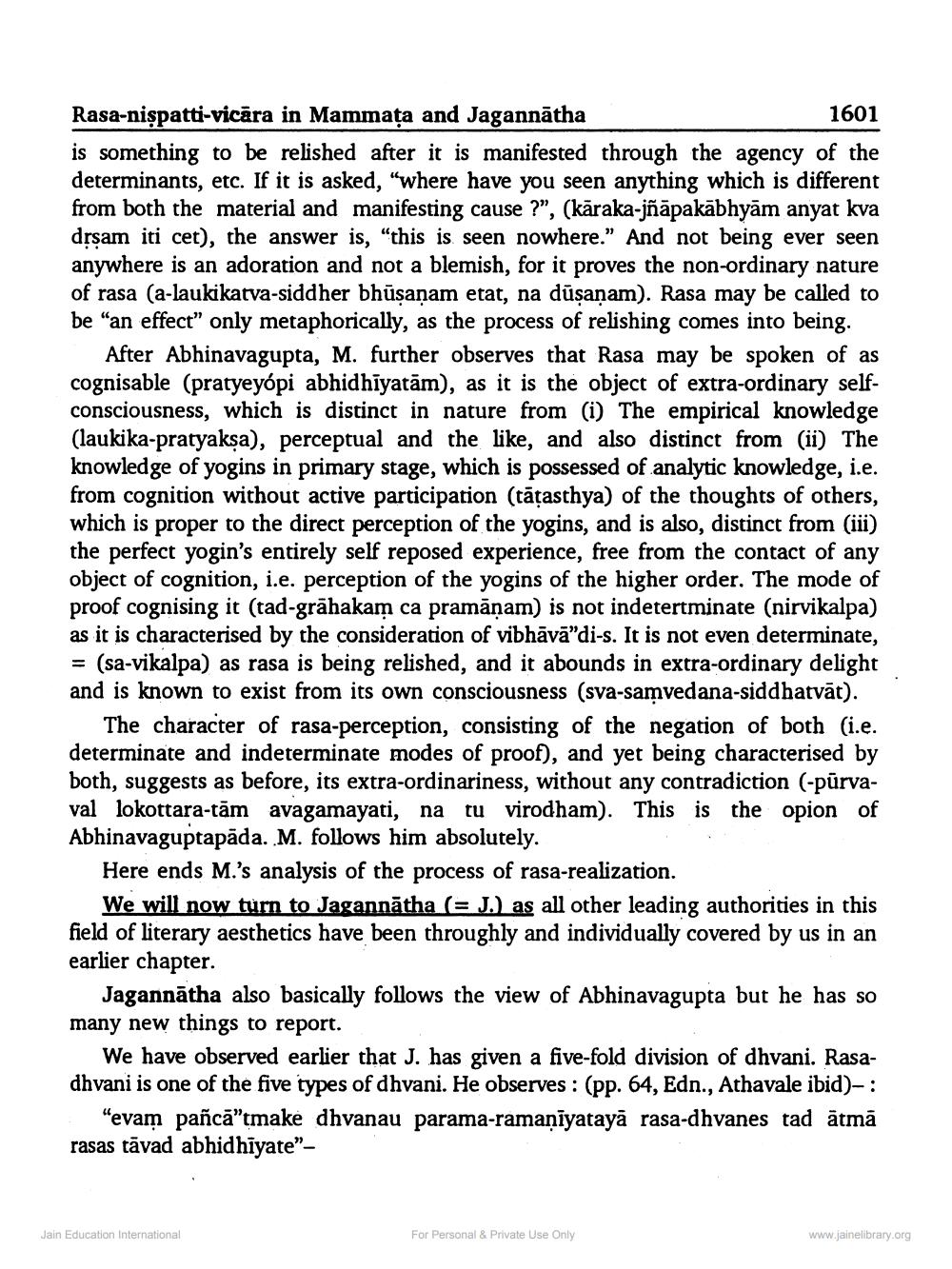________________
Rasa-nispatti-vicāra in Mammata and Jagannātha
1601
is something to be relished after it is manifested through the agency of the determinants, etc. If it is asked, "where have you seen anything which is different from both the material and manifesting cause ?", (kāraka-jñāpakābhyām anyat kva drsam iti cet), the answer is, "this is seen nowhere." And not being ever seen anywhere is an adoration and not a blemish, for it proves the non-ordinary nature of rasa (a-laukikarva-siddher bhūsanam etat, na dūsanam). Rasa may be called to be "an effect" only metaphorically, as the process of relishing comes into being.
After Abhinavagupta, M. further observes that Rasa may be spoken of as cognisable (pratyeyópi abhidhīyatām), as it is the object of extra-ordinary selfconsciousness, which is distinct in nature from (i) The empirical knowledge (laukika-pratyaksa), perceptual and the like, and also distinct from (ii) The knowledge of yogins in primary stage, which is possessed of analytic knowledge, i.e. from cognition without active participation (tāțasthya) of the thoughts of others, which is proper to the direct perception of the yogins, and is also, distinct from (iii) the perfect yogin's entirely self reposed experience, free from the contact of any object of cognition, i.e. perception of the yogins of the higher order. The mode of proof cognising it (tad-grāhakam ca pramānam) is not indeterminate (nirvikalpa) as it is characterised by the consideration of vibhāvā"di-s. It is not even determinate, = (sa-vikalpa) as rasa is being relished, and it abounds in extra-ordinary delight and is known to exist from its own consciousness (sva-samvedana-siddharvāt).
The character of rasa-perception, consisting of the negation of both (i.e. determinate and indeterminate modes of proof), and yet being characterised by both, suggests as before, its extra-ordinariness, without any contradiction (-pūrvavallokottara-tām avagamayati, na tu virodham). This is the opion of Abhinavaguptapāda. M. follows him absolutely.
Here ends M.'s analysis of the process of rasa-realization.
We will now turn to Jagannātha (= J.) as all other leading authorities in this field of literary aesthetics have been throughly and individually covered by us in an earlier chapter.
Jagannātha also basically follows the view of Abhinavagupta but he has so many new things to report.
We have observed earlier that J. has given a five-fold division of dhvani. Rasadhvani is one of the five types of dhvani. He observes : (pp. 64, Edn., Athavale ibid)-:
"evam pañcā"tmake dhvanau parama-ramaniyatayā rasa-dhvanes tad ātmā rasas tāvad abhidhiyate"
Jain Education International
For Personal & Private Use Only
www.jainelibrary.org




